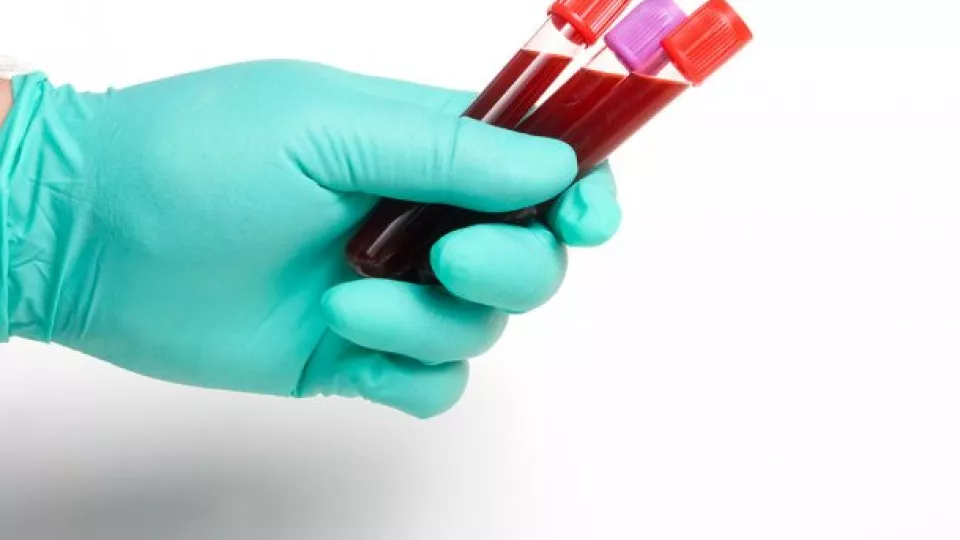“We don’t expect the marker to be able to predict who will try to commit suicide, but it may serve as a biological marker indicating greater stress exposure in vulnerable people suffering from various psychiatric conditions such as anxiety and depression. We would like to test the marker in future psychiatric studies and see how it is affected by, for example, lifestyle interventions, psychotherapy and pharmacological treatment”, says Daniel Lindqvist, associate professor of experimental psychiatry at Lund University and psychiatry resident at Psykiatri Skåne.
The researchers compared 37 patients who had been hospitalised at a psychiatric clinic after attempting suicide with an equal number of healthy control subjects. About 70 per cent of both groups were female, and the average age of the patients was approximately 40.
Compared to the healthy control subjects, the suicidal patients had strikingly increased levels of mitochondrial DNA in their cell-free blood plasma.
The researchers also found that the large amount of mitochondrial DNA in the plasma was linked to higher levels of cortisol in the blood. Cortisol is an important hormone in the body’s stress system and high levels of cortisol, which have been found in depressed and suicidal patients in previous studies, are a sign of an overactive stress system.
Previous studies have shown that depressed individuals have an increased level of mitochondrial DNA in their immune cells and that this is linked to stressful life events. Furthermore, studies on animals have shown that increased stress and cortisol levels are linked to higher mitochondrial DNA, but this is the first study to be tested on psychiatric patients.
“We believe the increased levels in suicidal patients are due to their exposure to severe stress for longer periods than the healthy subjects we compared them to. An increased level of cortisol can cause the body’s cells to malfunction, which in turn contributes to increased levels of cell-free mitochondrial DNA in the blood”, says Lars Ohlsson, senior lecturer at Malmö University.
“The amount of mitochondrial DNA in cell-free plasma is a new and interesting marker of stress that can be used in future psychiatric studies, but the results have to be replicated in other groups of patients as well. A key question will be how the biomarker changes over time in connection with the patient’s symptoms improving or deteriorating”, says Åsa Westrin, associate professor of clinical psychiatry at Lund University and senior physician at Psykiatri Skåne.
Contact:
Daniel Lindqvist, associate professor at Lund University, psychiatry resident at Psykiatri Skåne (currently at the University of California in San Francisco), +1 415 738 9971, daniel [dot] lindqvist [at] med [dot] lu [dot] se (daniel[dot]lindqvist[at]med[dot]lu[dot]se)
Lars Ohlsson, PhD, senior lecturer at Malmö University, +46 733 22 55 68, lars [dot] ohlsson [at] mah [dot] se (lars[dot]ohlsson[at]mah[dot]se)
Åsa Westrin, associate professor at Lund University, chief physician, +46 46 17 38 87, asa [dot] westrin [at] med [dot] lu [dot] se (asa[dot]westrin[at]med[dot]lu[dot]se)
Facts: Mitochondrial DNA
Mitochondrial DNA (mtDNA) refers to DNA originating from structures in our cells called mitochondria. The main task of mitochondria is to produce easily accessible energy for the cell in the form of ATP (adenosine triphosphate), but they are also involved in certain other cellular processes. Mitochondria have their own DNA, separate from the DNA found in our chromosomes in the cell nucleus. Because mitochondria are considered to have originated in a different type of cell than our current ones, their DNA is structurally and functionally somewhat different from our “normal” DNA. Any mtDNA that ends up outside the cell is perceived as “foreign” and can cause inflammation through our immune system.
Facts: Blood plasma
The blood is a mixture of cells (red and white blood cells and platelets), proteins, fats, carbohydrates and a fluid with a suitable salinity and pH balance. Blood plasma refers to what is left of the blood after all the cells and platelets have been extracted, for instance when separated through centrifugation without allowing the blood to clot. In other words, blood plasma contains all remaining components after the cells and platelets have been separated from the blood.
